On a R markdown file, does someone know why out.width,out.height,figure.width and figure.height parameters doesn't change plotly charts size when producing a pdf file? ( I precise that such parameters works perfectly using plot function)
Please find below a reproductible example with a Rmarkdown file
On this example, I would like the plotly chart to occupy the entire sheet like the plot chart.
---
title: "Change chart size chart on pdf file using plotly"
output:
pdf_document: default
---
```{r setup, include = FALSE}
knitr::opts_chunk$set(echo=FALSE,message=FALSE)
```
## Parameters doesn't work with plotly
```{r, out.width='100%',out.height='100%',fig.height=20, fig.width=15, fig.align="left"}
library(plotly)
plot_ly(x = cars[1:10,]$speed,y = cars[1:10,]$dist)
```
## Parameters works using plot function
```{r,out.width='130%',out.height='100%', fig.height=20, fig.width=15, fig.align="left"}
plot(cars[1:10,])
```

